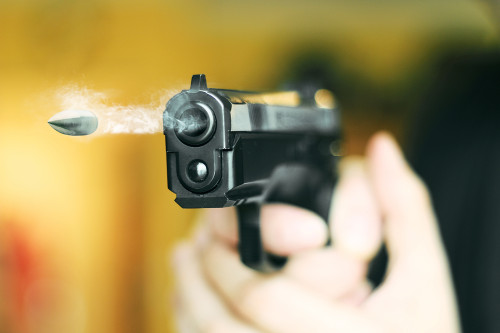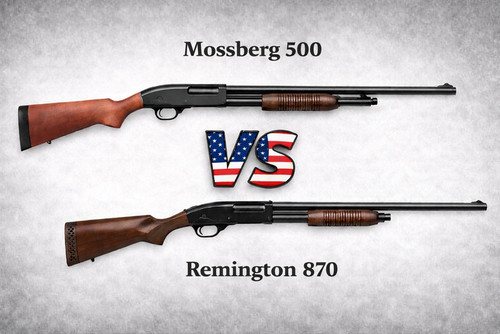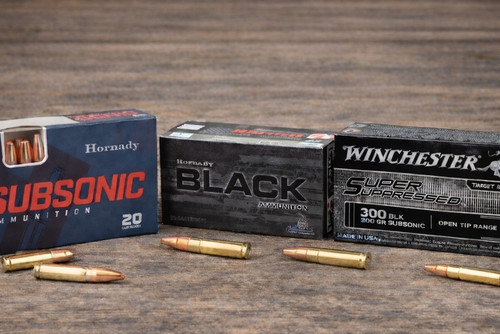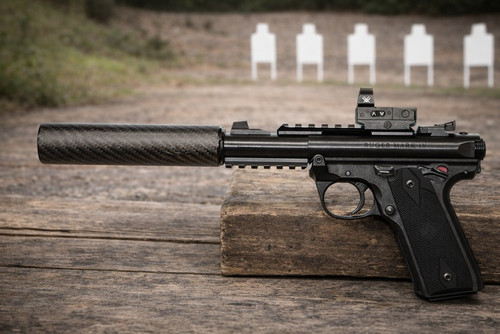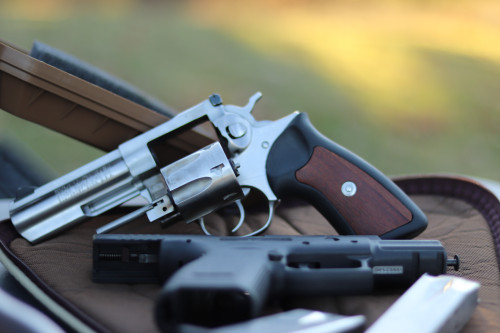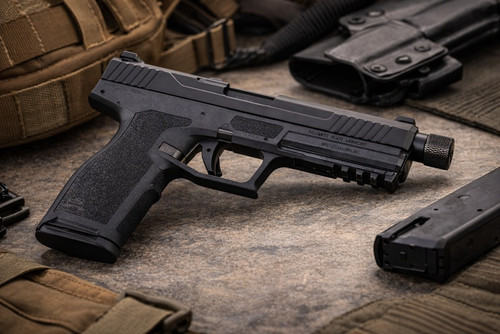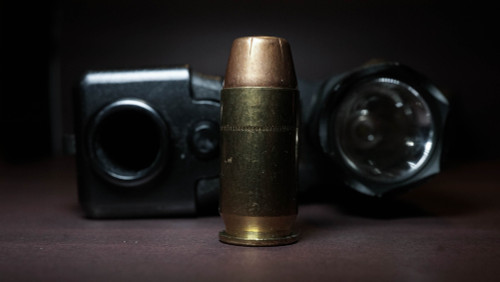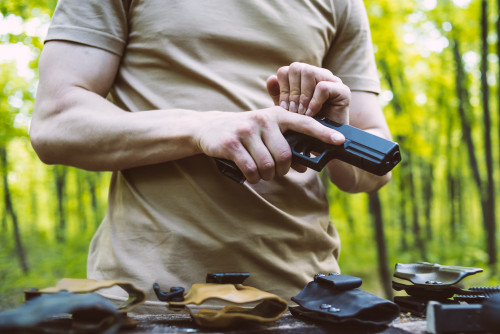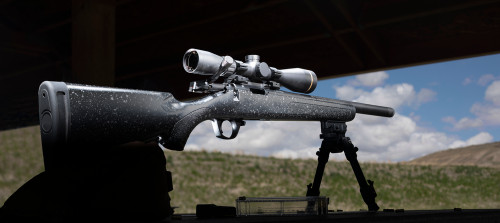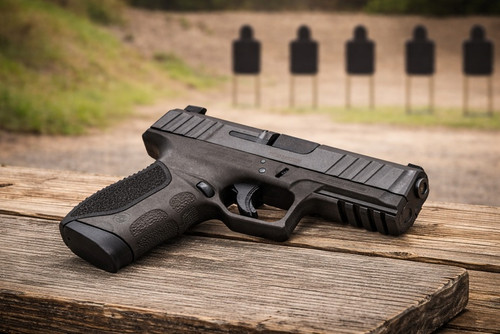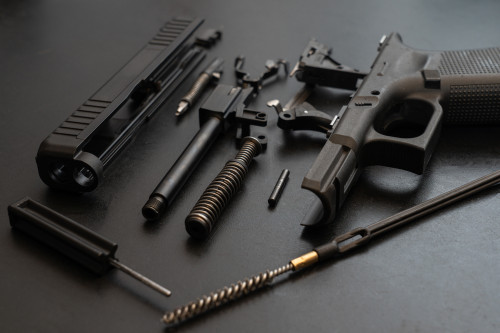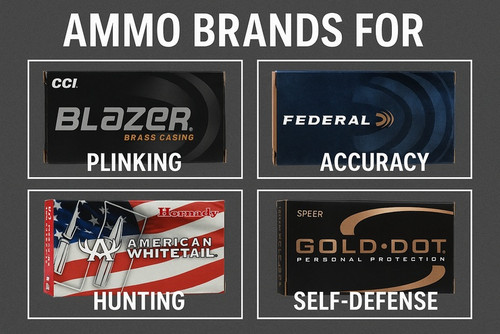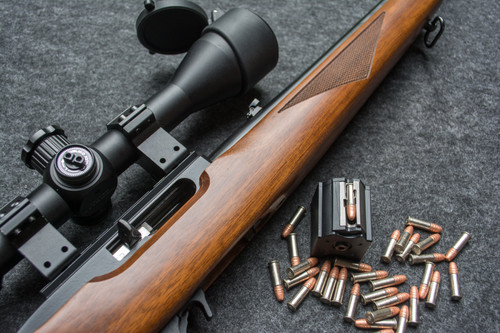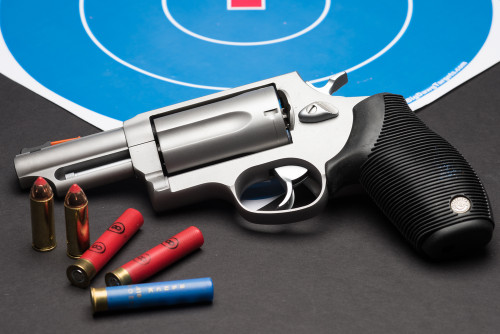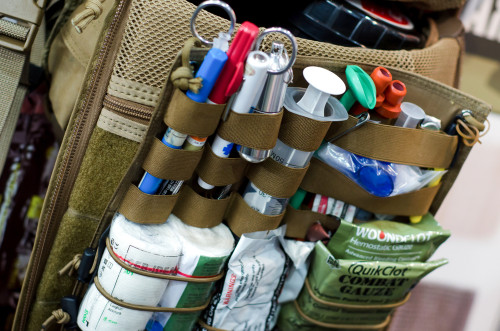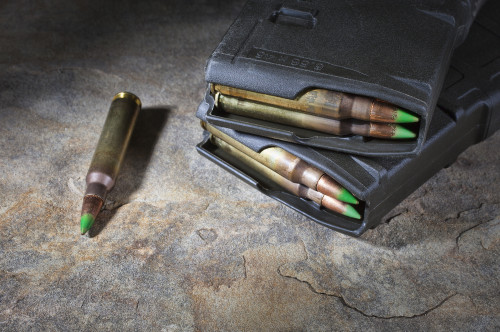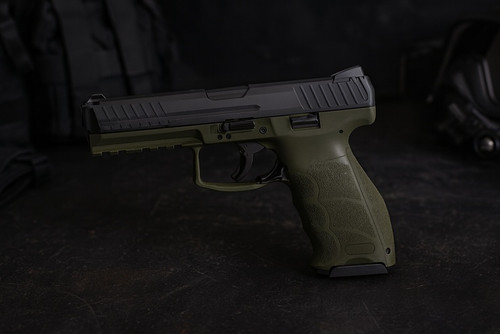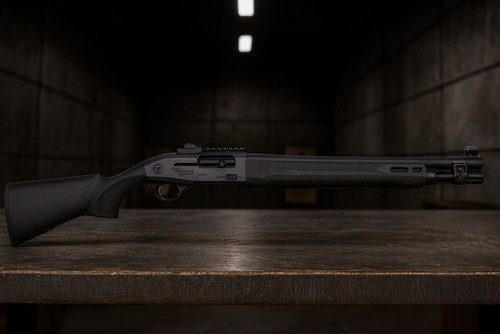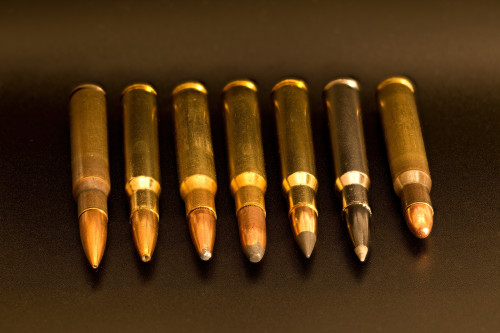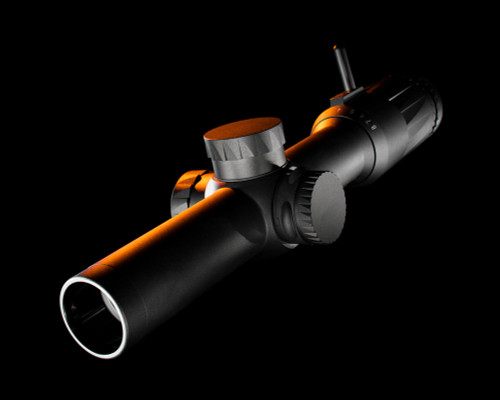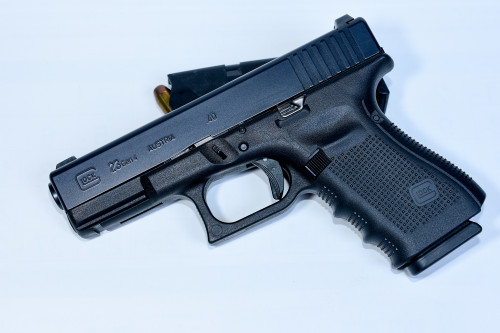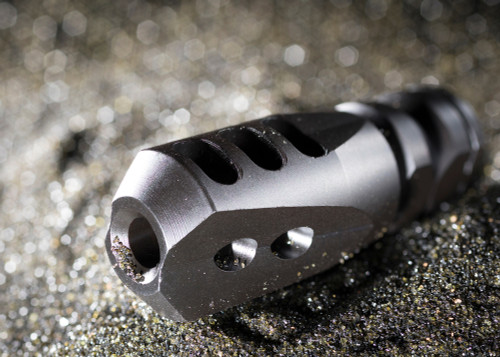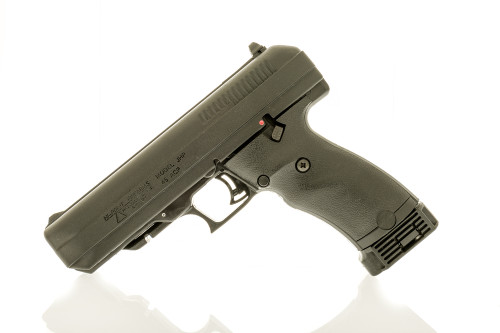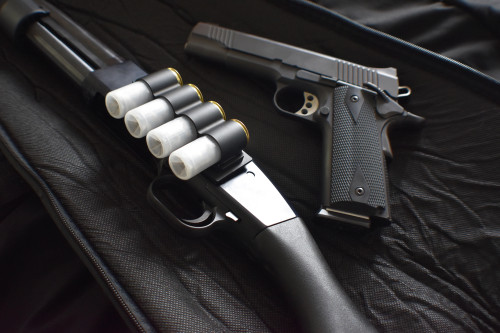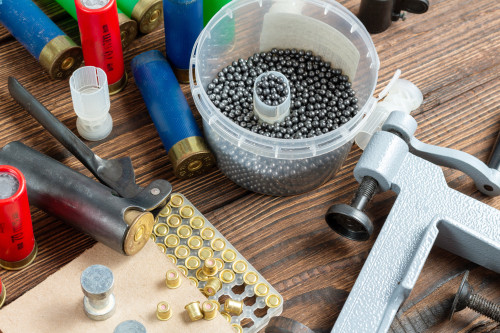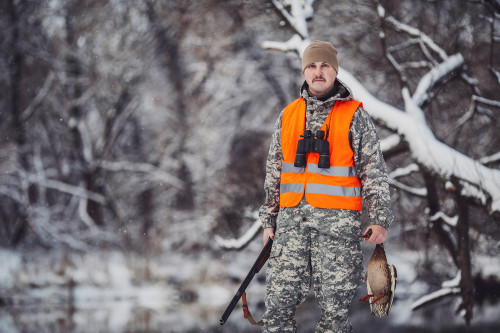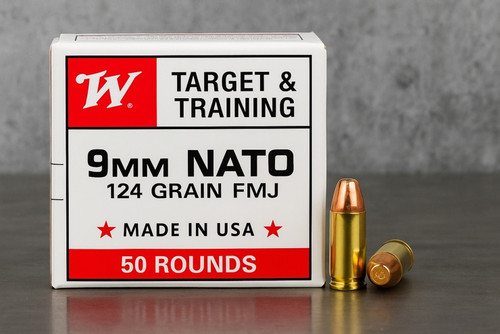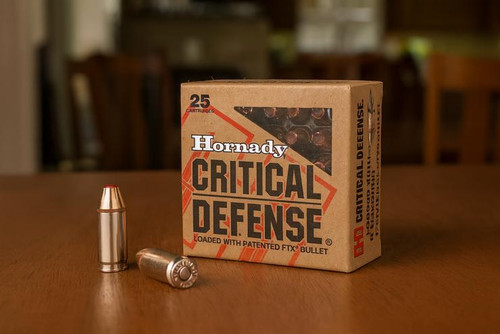In an era where rapid-fire weapons and thunderous booms are the norm, subsonic ammo stands out as a hidden gem. It offers a convergence of stealth and precision that supersonic weapons simply lack.
What’s more, subsonic ammunition is gaining traction among tactical shooters and those looking to protect their ears from the traditional report of a gun blast. Its practical uses in close quarters and applications for quieter operations is a growing demand amongst civilian consumers, military, and police.
While subsonic ammo is slower than standard ammunition, some rounds can be just as effective in terms of performance when you account for its limitations. Combined with the right accessories, subsonic ammo can be very helpful in certain shooting scenarios.
But if you’ve never used subsonic ammo, there’s a lot to learn so you can make the best purchase necessary. Here, we’ll explain the basic things you need to know about subsonic ammunition and why you should keep a few boxes or buckets of this ammo type in your cabinet for the right occasion.
What is Subsonic Ammunition?
Subsonic ammunition is any round that travels slower than the speed of sound (less than 1125.33 ft/s). This means that the round being discharged will not break the sound barrier to create the distinctively audible “crack” that supersonic bullets make. Most subsonic rounds travel just under 1,115 fps.
In contrast, most standard ammunition is supersonic, meaning it travels faster than the speed of sound (faster than 1125.33 ft/s). The average standard-velocity bullet travels at 2493.33 fps.
To compensate for the lack of speed, you may find some subsonic rounds with a heavier grain. Grain measures the weight of the bullet head (the projectile that travels through the air). Supersonic rounds are generally a bit lighter than subsonic rounds. With this in mind, make sure you have properly weighted and loaded subsonic rounds for your weapons, as heavier subsonic rounds can cause recycling/jamming issues in semi-automatic weapons.
Subsonic ammunition is common in both pistol and rifle cartridges. The police, military, and even hunters use this ammunition to help decrease their audible presence when they discharge their weapons. Subsonic ammo goes hand-in-hand with suppressed weapons and reduces your audible footprint exponentially.
Why is Subsonic Ammo Gaining Traction?
Subsonic ammo has a history of being used in police and military operations. The desire to train in urban and close combat situations propelled it into the spotlight, even among common consumers. Its popularity can also be attributed to a multitude of reasons, such as:
1. It Pairs Extremely Well With Suppressed Weapons.
Shooting subsonic ammo through a suppressed firearm is one of the coolest experiences you’ll ever have. While there’s no tried and true way to make your shots “hollywood quiet,” a suppressor can dampen the report on your firearm to a noticeable degree. Some rounds won’t even technically require ear protection (although it’s wise to wear it anyway to be safe).
If your state allows suppressors (and you’re willing to jump through the ATF’s hoops to get one), this is a great option for hunting or other stealth operations. Going quiet disrupts the local wildlife far less than a .30-06 blasting off in the woods. You disturb the local game population less, and your ears will thank you later.
2. It Offers a Heavier Round While Negating the Kick of Supersonic Rounds.
Subsonic ammo is also excellent for those who need better recoil control. The lower velocity makes for less felt recoil, which makes shooting much easier on the wrists and elbows. Because of this, people with arthritis or generally weaker wrists may find subsonic rounds easier to shoot.
With less blowback, you can achieve better accuracy and consistency across shots. This reduced kick is imperative when tight quarters demand straight shooting and less sweeping across a target field.
3. It Is Available With Almost Any Ammunition Retailer.
While subsonic ammo may not be as popular or widely used as traditional supersonic ammunition, it is still widely available. You can find supersonic variations of some of your favorite rounds at just about any ammo dealer (in person or online) that knows their stuff. 9mm, .45 ACP, .300 Blackout, .308 Winchester, .22LR, and 5.56 NATO are all common subsonic rounds.
While some calibers have both supersonic and subsonic variants, some (fairly common) calibers are naturally subsonic. For instance, .45 caliber ammunition is inherently subsonic. A 230 grain .45 bullet travels 850 ft/s on average, well below the speed of sound. That means the famous U.S. military’s Colt .45 semi-automatic service pistol was blasting off pretty slow.
But that didn’t stop this big and heavy round from doing some serious damage. Along with its subsonic properties, its speed made it an ideal round for suppressed .45 weapons in World War II.
Above all, subsonic ammo is a tactical choice. It isn’t appropriate for every situation, but for ear protection and stealth, it’s a fantastic addition to any arsenal.
Shooting Subsonic with a Suppressor
In layman's terms, a suppressor is a device that helps mitigate the gasses released from the barrel from the discharge of the round. A suppressor alone won’t always make the report of a supersonic round much quieter, but combined with subsonic ammunition, you can really start to get stealthy.
For example, a user firing a suppressed Remington 700 will experience 120-100 (maybe less) decibels of audio impact behind the gun/muzzle. The muzzle-forward would issue a 130-150 decibel report. Suppressors combined with subsonic ammunition save the user’s ears from wear and tear, help diffuse the point of origin of the noise source, and allow shooters to conceal their positions.
However, this all depends on what firearm you’re using and your ammunition of choice. Hunting a moose at long range? Subsonic probably won’t help you make a clean kill. The best combinations of subsonic ammunition for hunters is using it with a suppressor or at shorter ranges like 100-150m.
That said, this combo is also good for home defense. When a goblin breaks into your house at night, you probably won’t be looking for ear protection. Shooting off a 9mm in the dark can be really disorienting, especially if you have to fire multiple shots. Now your ears are ringing while you’re trying to acquire your target, and your family might be deaf. This prevents you from issuing commands and potentially initiating their fight or flight response. They might freeze in place, run, or otherwise put themselves in greater harm’s way — you simply don’t know what will happen. However, using a subsonic 9mm with a suppressor can protect everyone’s ears from a loud bang, allowing for a more controlled and organized reaction to the intruder.
TIP: 9mm rounds that are 147-grain or heavier are naturally subsonic. However, most ammo boxes will not say that directly.
Can You Shoot Subsonic Ammo Without a Suppressor?
While using a suppressor with subsonic loads creates the best silencing effect, using it by itself with no suppressor will still make an audible difference. The report will still be loud, but it won’t be as loud as a supersonic projectile.
In fact, there are subsonic rounds that can achieve the same results as supersonic, depending on the platform. For instance, the .45 ACP and .380 are both inherently subsonic calibers. Here’s a quick look at the performance of these iconic rounds:
.45 ACP
The .45 was a standard subsonic choice for the U.S. military for decades. The reliability, stopping power, and assured subsonic performance made this a top pick for the military, even all the way up to 1983.
While the .45 ACP is subject to much love and hate, it’s still an adequate competitor to the 9mm, especially in terms of stopping power. For a subsonic round, it packs a real punch, making it great for self-defense.
.380
The .380 is known for low recoil, good stopping power, and its similarities to the 9mm. It’s also chambered for more concealable firearms, making it an easy choice for appendix carry. It’s a popular civilian self-defense caliber because of the low recoil factor and ready availability on store shelves. While it is overshadowed by the massive versatility of the 9mm, we see the .380 still used as a backup weapon and in the famous Ingram MAC-11.
Subsonic vs. Supersonic Ammunition
While there are several benefits to using subsonic ammunition, it cannot compete with supersonic projectiles in terms of speed and a few other factors. Here are a few ways they compare:
| Subsonic Ammo | Supersonic Ammo |
|---|---|
| Subsonic ammunition tends to be heavier and has a lower penetration-to-distance rate (unless it’s in close quarters, on average about 100m or less). | Supersonic tends to be lighter and also tends to penetrate deeper. |
| Subsonic hollow point bullets expand at a slower rate, matching their speed. | Supersonic hollow points expand rapidly, causing more damage to the target. |
| Subsonic ammo can be more accurate than supersonic (from 100-200m) because it doesn’t push through the differentials and resistance of encountering the sound barrier. | Supersonic rounds can be less accurate due to their pushing through the sound barrier, encountering differentials, and other factors such as wind speed. However, the longer range and overall retention of accuracy still make this a desired choice, in addition to having subsonic loads in your arsenal. |
| Generally, subsonic ammunition is slightly more expensive than supersonic. It can be considered a “speciality” ammo due to its excellent pairing with suppressed weapons. | Supersonic ammunition is typically less expensive and more commonly found than subsonic. Supersonic is used by hunters more than subsonic and thus increases demand to be cheaper. |
Choosing the Right Firearm for Subsonic Ammo
Many firearms can use subsonic ammunition, but not every firearm is a good choice for subsonic. The right choice depends on how you plan to use the firearm.
Maybe you’re hunting an elusive trophy buck you’ve been tracking for two weeks but don't want to spook anything else in the area. In this case, use a Winchester lever-action .30-30 or a .308.
If you’re patrolling your own house or gearing up for self-defense, a Heckler and Koch UMP .45 will also do the deed.
Keep in mind that some calibers such as .45 ACP, .380, and .32 are all naturally subsonic, meaning any ammunition you get for these will already fire below the speed of sound. Depending on your mission profile, your targets, and your environment, the best choice will vary.
What Firearms Should Not Use Subsonic Ammunition?
Using subsonic rounds in semi-automatic weapons carries a risk of the weapon not cycling properly or even jamming. The blowback and energy received by the gas/spring mechanisms in a semi-auto firearm using subsonic ammo may be too low to move the components properly.
Bolt-action and pump-action subsonic ammunition, by themselves, pose little threat to weapons jamming. However, in semi-auto weapons, the amount of force projected is the amount of force received by the gun. As physics goes, the amount of force exerted forward is the same amount exerted backward. This means that as much energy is leaving the barrel as it is receiving to shove the slide back and rack the next round.
That said, weapons like the MP5 with a suppressor were built for handling subsonic ammunition. However, your at-home Ruger may not be. Make sure you verify the stats of your weapon’s cycling ability (ability to chamber the next round after being fired) and test your weapons. Do not rely on new ammunition you’ve never tried or experimented with, and hope for the best. Always do your research and test your ammo before trusting your rounds — it could be the difference between life and death.
Our Top Picks for Cartridges for Subsonic Ammo
If you’re convinced you want some subsonic ammo in your arsenal, you’ve come to the right place. Pro Armory has great subsonic options available in several calibers. Here are our top picks for subsonic rounds you can order today:
.300 Blackout
The .300 blackout subsonic is a good overall rifle round to keep your operations quieter. The versatility and widely renowned ability of the .300 blackout keep this caliber popular among hunters, police, and military alike. Its versatility, interchangeability, and wide access to ammunition make this a good choice, especially for modern sporting rifles.
Check out the specs on Federal American Eagle subsonic .300 blackout:
- Muzzle Velocity: 1000 fps
- Muzzle Energy: 488 ft. lbs
- Primer: Boxer
- Casing: Brass
.22LR
The Remington .22 LR subsonic 40 grain rounds give you affordability and dependability thanks to Remington's reputation and high-quality standards. These are excellent for property protection from varmints and small game. You can strike coyotes up to 100-200m with confidence thanks to Remington’s .22 subsonics. Since .22LR isn’t really a loud round to begin with, shooting the subsonic version with a suppressor is about as close to “hollywood quiet” as you can get.
Here’s the scoop on the Remington .22 LR Subsonic 40 grain:
- Muzzle Velocity: 1064 fps
- Muzzle Energy: 98ft/lbs.
- Primer: Boxer
- Casing: Brass
If you’re looking for something to do a bit more damage, the Remington .22 LR Subsonic 38 grain hollow-point is also a good choice. While somewhat lighter than the 40 grain above, the hollow point design allows for a more devastating hit to your target. This .22 subsonic cartridge offers a quiet but long-reaching option (up to almost 200m) for folks who want to deal with varmints while disturbing local wildlife as little as possible.
Here are the stats:
- Muzzle Velocity: 1050 fps
- Muzzle Energy: 90 ft. lb
- Primer: Boxer
- Casing: Brass
.45 ACP
The Ammo Inc. .45 ACP 230 grain loads offer great self-defense potential from both humans and more aggressive or invasive animals. Even angry bears will rethink themselves when struck by this stinging round of choice. The .45 is naturally subsonic and a heavy, hard-hitting round, and it’s almost never a bad choice.
Here are the stats on the .45 ACP 230 grain from Ammo Inc.:
- Muzzle Velocity: 895 fps
- Muzzle Energy: 432 ft. lb
- Primer: Boxer
- Casing: Brass
Take Full Advantage of Subsonic Ammo
Whether it’s hunting local game, chasing off pesky varmints, or defending your life and home, using subsonic ammo can be highly effective. While it isn’t the perfect round for every situation, it can benefit those looking for a more low-profile round to protect their ears, decrease noise, and reduce recoil.
Its effectiveness depends on the situation. It’s a superior choice for certain mission profiles where stealth, close quarters, and/or other tactical restrictions apply. There’s a reason why it’s been in service with police and military units for decades. Having certain loadouts on your person geared for long-range or short-range fighting, indoors/close quarters combat, or stealthier applications can infinitely increase your combat effectiveness or versatility in the field.
If you want help selecting the perfect firearm, ammo, and accessories for your lifestyle, you’ve come to the right place. The team of veterans and shooting enthusiasts at Pro Armory are ready to help you find the right gear for every occasion — along with tactical firearm training to help you become more effective than ever with your firearm.
Stay prepared for any mission profile. Contact us for advice, or browse our selection of subsonic ammo online today.



